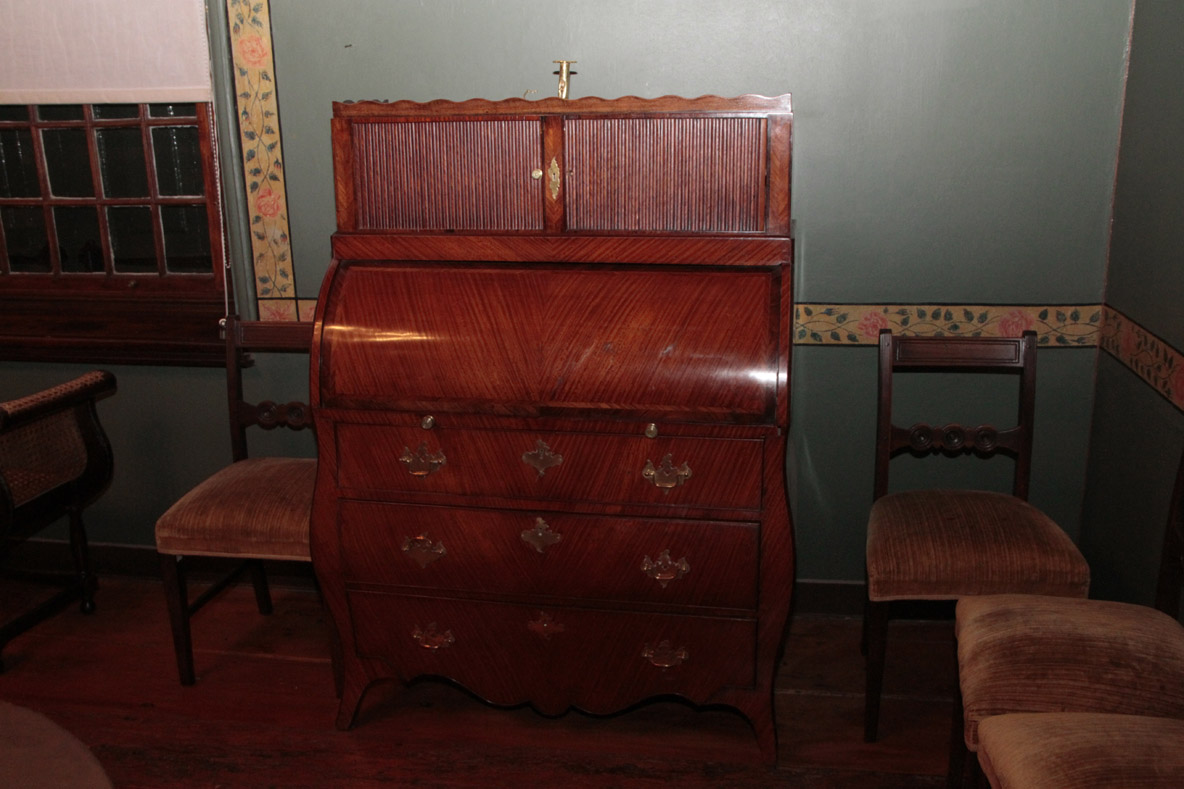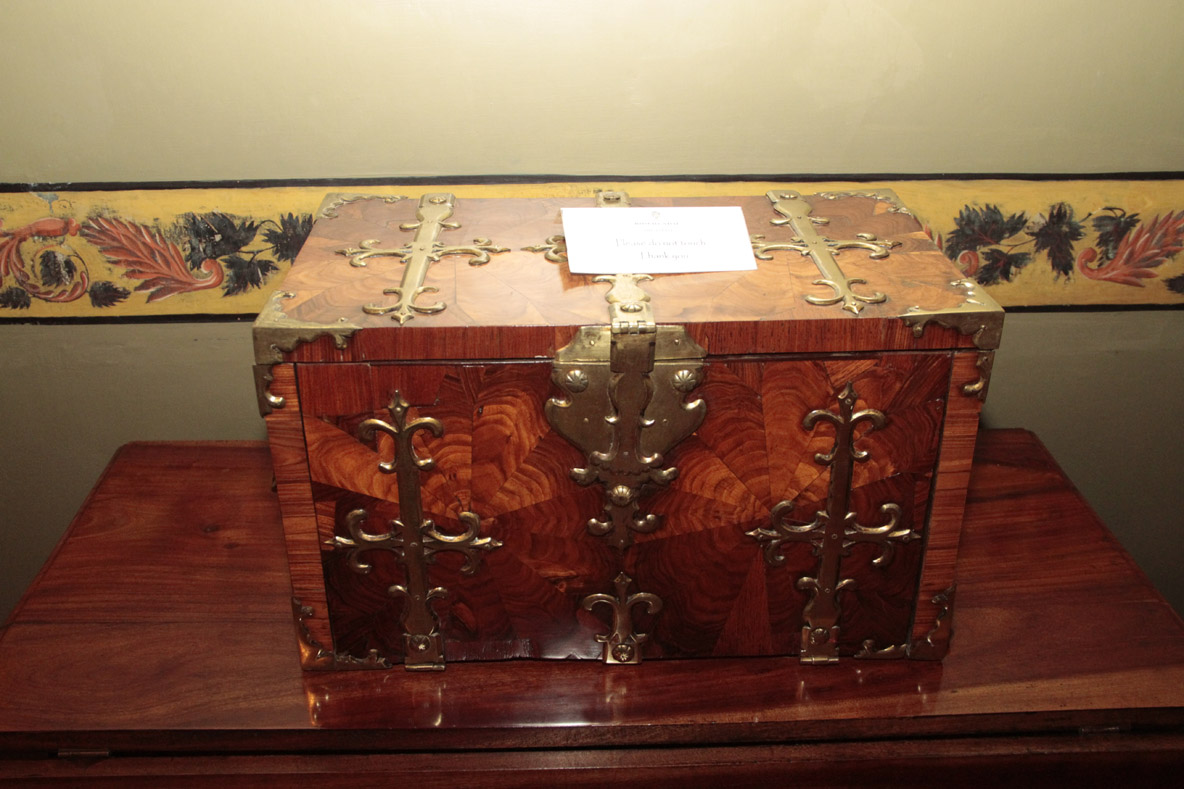On the second day of our tour of the Cape Wine lands, our last visit for the day was to the Boschendal Wines. After the wine tasting which has become a regular ritual in all the wineries we visited, we retired for dinner with the Boschendal family led by Goncalo Faria, the company’s Regional Director Africa and Middle East. Dinner was to be served at the Boschendal Manor House. We drove through the vast land to the Manor House tucked away somewhere on the property. We arrived the Manor House, a 201 year old house with a story so captivating, Rowena Petersen was giddy to share with us.
The Boschendal Manor House is one of those houses that remind ones of the activities of the Colonial Masters in the Cape lands. The name Boschendal which means ‘Wood and dale’ is a wood house that reflects the opulence of the occupiers of the house at the time it was built.
Boschendal farm lands according to Rowena who took us on a tour of the house, was given to the French man Jean Le Long by the governor of the Cape in 1685. He later sold it Abraham de Villiers in 1715. The Villiers, were successful farmers and lived on the farm until 1879. Abraham Villiers’ youngest son, Paul Villier, built the house that is now known as the Boschendal Manor House in 1812 along with his wife Anna Susanna Louw. They had 22 children some from his first wife. The house has since been opened to the public as a museum with everything kept intact and preserved- ‘ the architecture is still the same, the floor board, the ceiling, the door, everything is original’ says Rowena.
Built in an H-shape which was a common style of building houses in those days as it gives the owner a full view of both the front and back of the property, we entered the house through the front door known as the table door. The table door opens half way in with shutters that serves dual purposes. The door keeps the wind off and the light in. In those days, when the door was opened, it indicated a visitor was welcome but if the door was closed, then the visitor knew he or she was not welcome.
As we enter the foyer, where visitors were often greeted with sweet house wine, to the left was the main bedroom. Every room in this house tells an interesting story that reveals the classic Victorian and Edwardian lifestyle of the people in the 1800s.
Standing conspicuously in this bedroom is the 19th century stinkwood four-poster bed with hand crocheted canopy frill. We observed that the bed looked rather short but Rowena explained that the French were believed to be small people and so the bed was suitable to their size.
Because there were no bathrooms inside the house in those days, the householders took their bath from a Nankin porcelain basin placed on a wooden stand near the bed while they eased themselves with a chamber pot placed under the bed.
Placed beside the bed was a fruit wood cot with only three sides so that the baby could lie close to its mother.
Further into the room was another door that lead into the girls’ room. It was believed that girls were well protected in those days. With this kind of arrangement, it ensured that the girls couldn’t leave without their parents knowing as they had to pass through the main room to go out.
We entered the Drawing room, a large room where it was told that family entertained. Decorated with frieze, it was where they played cards, mad music and danced. Nicely decorated for the era, a portrait of Abraham Benjamin de Villiers of Pearl hung in the room. A well laid floral marquetry table with mother of pearl inlay.
The drawing room also boasted of a fire place. It was believed that fireplaces were a luxury the British introduced into Cape Town in the 19th century.
Along with the fireplace to warm the foot, was the foot warmer which could be moved around and used throughout the house. ‘The good life’ which is a term often used around the Wine Cape lands, was very evident in this house with the quality of wood works present.
After a tour of the kitchen and the second room which is now like an exhibition room, we settled at the dining room where we had dinner and wine tasting. It was a 19th century dining table with extension leaves. There were wall paintings which were believed to be fashionable at the Cape at that time. Here it was, that the family sat down to dinner with slaves waving peacock feathers behind them to keep the flies away. Although slavery was abolished in 1834, sitting at this table with our hosts, brought back memories of those years. Many of the slaves believed to have come from the East Indies, have a great influence on the local cuisines of Cape lands. The baked potatoes and chicken along with other unfamiliar servings on our dishes were greatly relished with the combination of white and red wine to flush it down. We had a good time as we talked and laughed into the night.
Although we aren’t very sure if we will have the opportunity to visit the amazing house again, the fact that the door was half open; an indication that we were welcome according to Boschendal tradition, leaves us rest assured that if we do return, we will be received as wonderfully as this time.





















